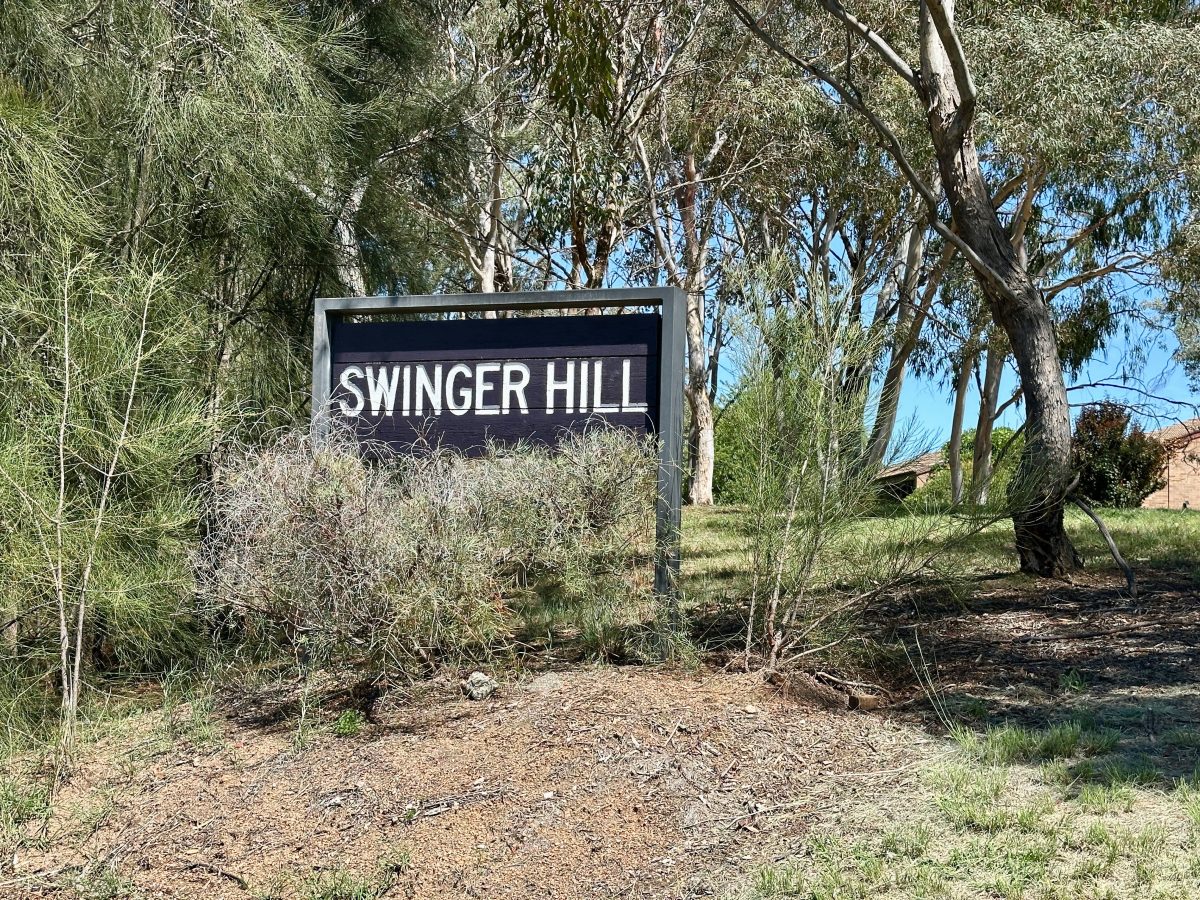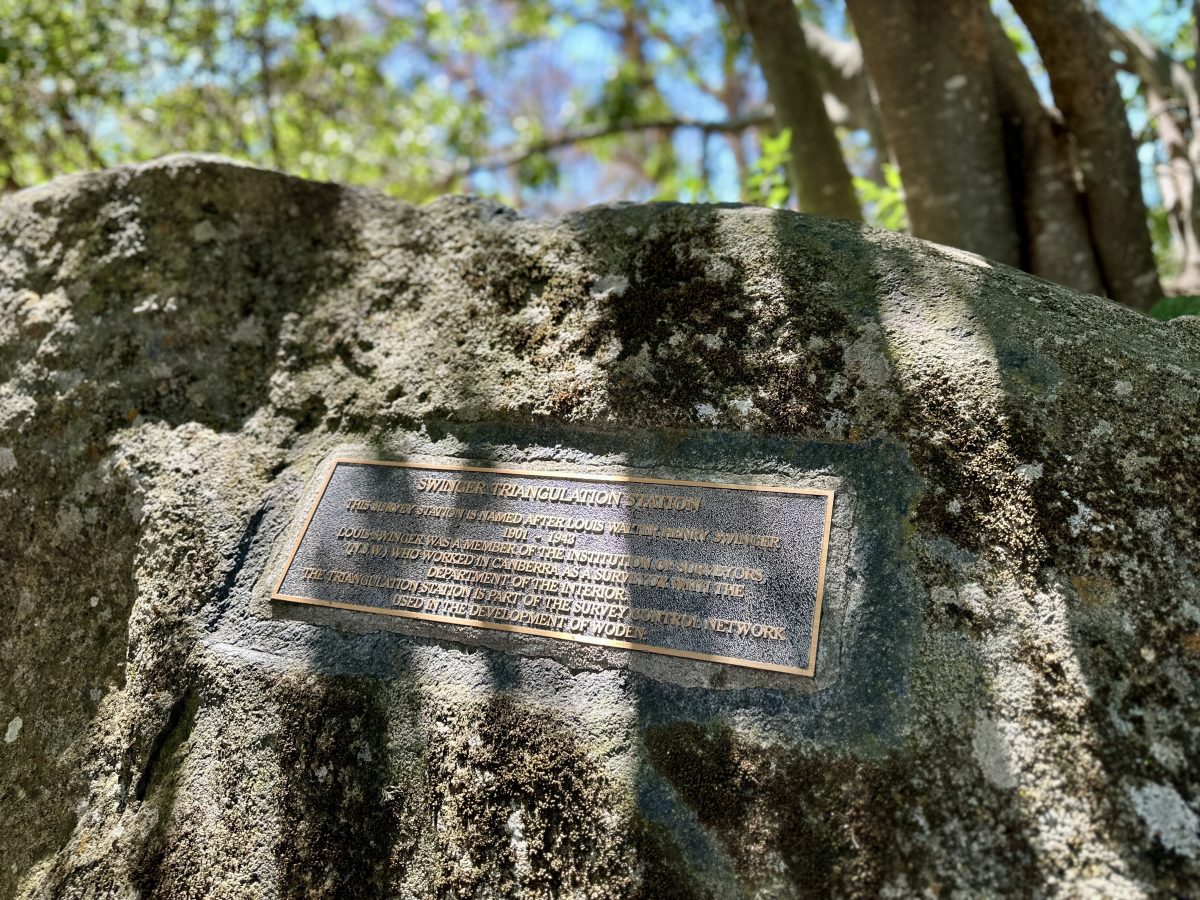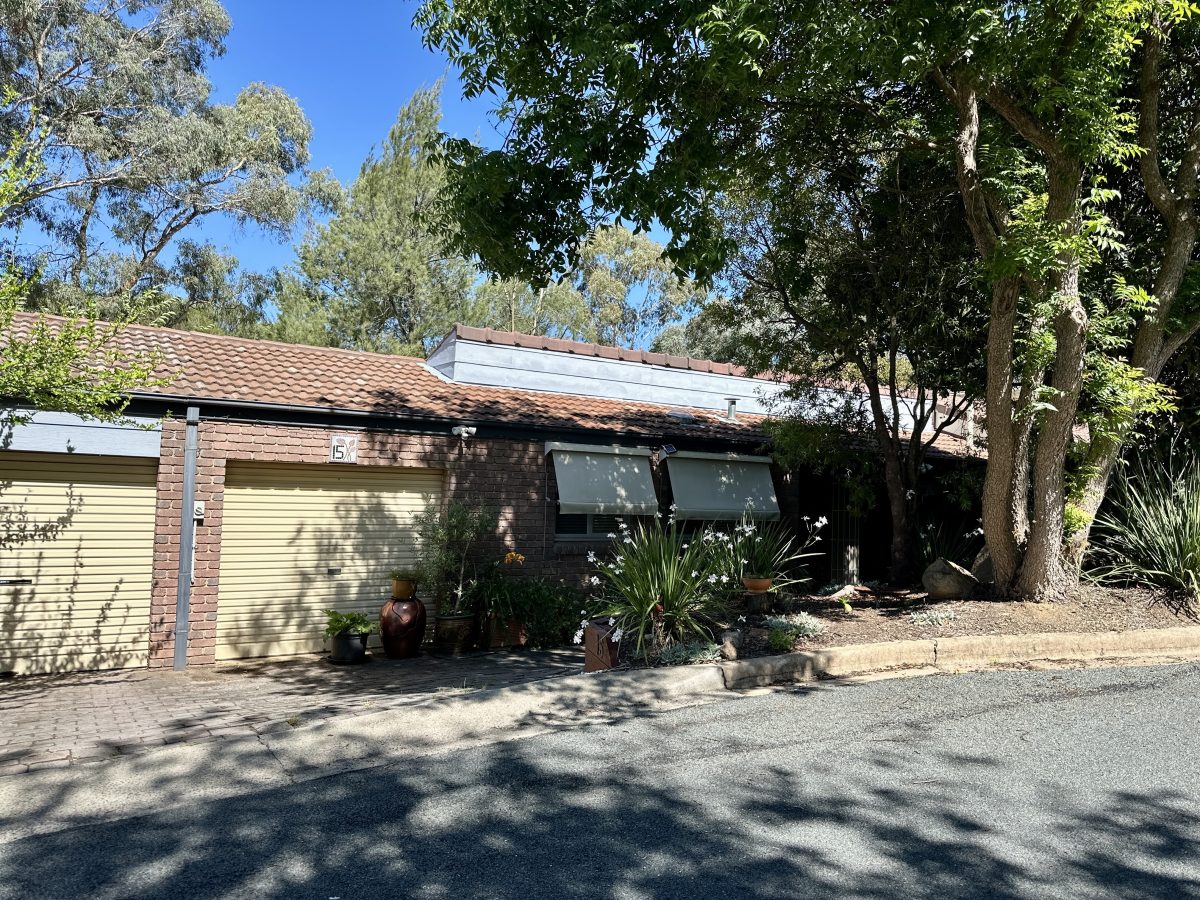
Residents of Swinger Hill gathered around the plaque to the precinct’s namesake, Louis Swinger. Photo: James Coleman.
Of all the places in Canberra known to trigger a childish snigger whenever its name is mentioned out loud, few beat ‘Swingers Hill’.
“It’s just one ‘s’,” Lynne Bliss corrects me.
Oh.
It turns out ‘Swinger Hill’ is named after one of Canberra’s most famous surveyors – Louis Swinger – and last year marked the 80th anniversary of his sudden death.
Lynne has called it home for 16 years and wouldn’t have it any other way.
“I downsized in 2008 and set my heart on coming here because I’d seen it being built in the 1970s and always thought it was such an interesting place,” she says.
“It has such a lovely community feel.”
You’ll know Swinger Hill as that medium-density housing experiment between Phillip and O’Malley, built in 1972.
Reacting to the slew of large houses on equally large blocks popping up around the ACT at the time, the National Capital Development Commission (NCDC) decided to try something different.
With input from architect Ian McKay, it created a small town-like area of semi-attached and attached dwellings, with low-maintenance yards and courtyards, small cul-de-sacs, and plenty of open spaces where kids could play.
“This total scheme design has been organised to provide a high degree of individual privacy, safety and convenience,” a development plan from the time reads.

The entrance to Swinger Hill from Hindmarsh Drive (note the one ‘s’). Photo: James Coleman.
But all this tends to drown out the precinct’s namesake, for whom the residents share an equal amount of love.
In the 1940s, the ACT was divided up, and different parts were assigned to different surveyors. Louis Walter Henry Swinger was assigned the area around Phillip.
Louis had moved to Canberra in 1942 with his wife, Gladys Swinger, having been evacuated from Nauru, an island northeast of Australia, when it was bombed by the Japanese.
He died the following year, aged only 42.

The plaque to Louis Swinger at the top of Swinger Hill. Photo: James Coleman.
“It seemed so sudden,” Lynne says.
“He was alive in the morning at 8 and was dead by 6. There’s no mention of how he died, but one assumes a heart attack.”
He was buried in the Presbyterian cemetery in East Maitland, his hometown.
Lynne says it was not uncommon for surveyors to temporarily leave their names on their areas, but Swinger’s stuck.
Even a proposition much later in 2012 to rename the area ‘Howard Hill’ – after former prime minister John Howard – never made it.
“In many ways, we feel very fondly of Louis Swinger,” she says.
“His story just seems so sad.”
Although they might have missed the actual 80th anniversary of Swinger’s death on 15 November 2023, a group of residents gathered at the top of Swinger Hill for a belated commemoration.
A metal plaque embedded into a large rock marks the ‘Swinger Triangulation Station’.
“We all just walked up there, and one resident made a beautiful cake. We just stood around and chatted. It was a good vibe.”

An example of one of Swinger Hill’s revered townhouses. Photo: James Coleman.
It’s far from the first time.
The area’s residents rally around their own Swinger Hill Facebook group, headed by another long-term resident, Doug Millen.
And they’re all quite proud of the small, secluded nature reserve locked away at the heart of their housing estate.
“There’s probably about three to four organised events up here every year,” Lynne says.
“There are more kids these days on Swinger Hill, obviously because of the type of houses – the townhouses are all of good sizes and have yards, and there are lots of walking tracks – so we’ve also had Easter hunts.”
The residents credit the late Judy McConchie with this and for creating the Swinger Hill Residents Group. A plaque on a nearby rock to her is engraved with the slogan, “A spirit of place”.

Suzie Lazzari runs Swinger Hill’s very own café, Grain de Cafe. Photo: James Coleman.
Another new addition residents are particularly proud of is their own café.
Earlier this year, Suzie Lazzari opened ‘Grain de Cafe’, a small French-inspired eatery tucked behind the IGA off Ainsworth Street.
Suzie previously headed up Lazzari Bros in Kambah (until new owners took over and it became Café de Blanco).
“It’s really something our community was missing – its own coffee shop within walking distance,” Lynne says.
As it turns out, Suzie hails from Urambi Village in Kambah, the medium-density housing precinct that followed Swinger Hill in 1974, designed by architect Michael Dysart.*
But Lynne says Urambi and, later, Wybalena Grove in Cook just aren’t the same.
“They weren’t built by the government,” she says.
“They were built by residents who decided they wanted a different style of living. And they weren’t built around a hill.”
*CORRECTION: This article previously stated Michael Dysart was the architect behind Swinger Hill.












